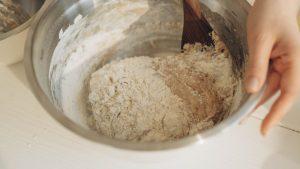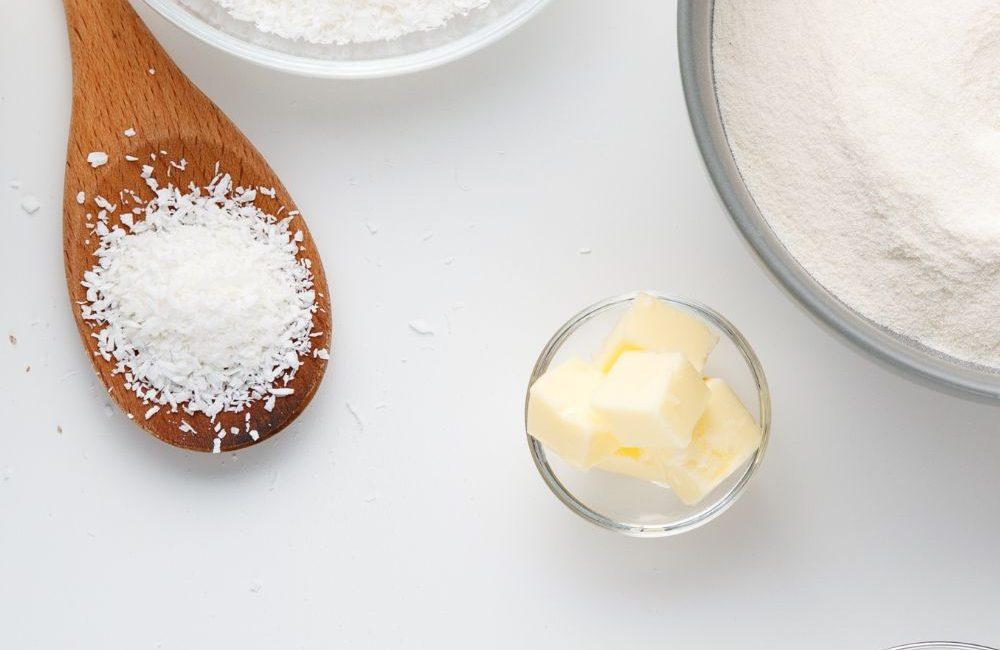Welcome to today’s blog post, where we dive into a common but crucial question in the world of baking: Should you mix the flour and sugar before adding the butter when making cookies?
Join us in this conversation as we explore the science and art behind creating the perfect cookie dough and why this step can make all the difference in your homemade treats.
Mastering Cookie Recipes: When to Combine Flour and Sugar in the Mix
Yes, when making cookies, it’s generally a good practice to mix the flour and sugar together before adding the butter.
This helps ensure that the dry ingredients are evenly distributed and that the sugar is well incorporated into the mixture.
Mixing the flour and sugar first also prevents clumps of sugar in the final dough and promotes even sweetness throughout the cookies.
Here’s a basic step-by-step process for making cookies:
In a mixing bowl, combine the flour and sugar. You can also add other dry ingredients like baking powder, baking soda, and salt at this stage if your recipe calls for them.
Mix the dry ingredients together until they are well combined. You can use a whisk or a fork for this step.
Add the softened butter to the dry ingredients. The butter should be at room temperature to make it easier to incorporate into the mixture.
Use a mixer or a wooden spoon to blend the butter into the flour-sugar mixture. Mix until the dough starts to come together and no large clumps of butter remain.
At this point, you can add any additional ingredients like chocolate chips, nuts, or flavorings, if your recipe calls for them.
Continue to mix until all the ingredients are fully combined, and you have a cohesive cookie dough.
Proceed with shaping the dough into cookies and baking them according to your recipe instructions.
By following these steps and mixing the flour and sugar first, you’ll likely achieve a more consistent and delicious batch of cookies.
Further explanations here.
let’s break down the steps in more detail:
Combine Dry Ingredients:
Begin by taking a mixing bowl and placing in it the specified amount of flour and sugar according to your recipe.
If your recipe calls for other dry ingredients like baking powder, baking soda, or salt, add those to the bowl as well.
These dry ingredients should be evenly distributed throughout the dough to ensure consistent taste and texture.
Mix Dry Ingredients:
Once the dry ingredients are in the bowl, use a whisk or a fork to thoroughly combine them.
This step is important because it ensures that the dry ingredients are evenly distributed. It helps to break up any clumps in the sugar and ensures that all the dry ingredients are well mixed.

Add Softened Butter:
Next, add the softened butter to the bowl. Softened butter is easier to work with and incorporates more smoothly into the mixture.
It’s important to use butter at room temperature because it will mix more evenly with the dry ingredients. The goal here is to combine the butter with the dry mixture.
Blend Together:
Use either a hand mixer, a stand mixer, or a wooden spoon to blend the softened butter into the flour-sugar mixture. The aim is to create a dough that starts to come together.
During this process, the butter should integrate with the dry ingredients, forming small clumps that will eventually lead to a cohesive dough.
Continue mixing until you no longer see large clumps of butter, and the mixture becomes more uniform in texture.
By following these detailed steps, you ensure that all the dry ingredients are evenly distributed, and the butter is well incorporated into the dough.
This method helps in achieving a consistent and balanced flavor and texture in your cookie dough, resulting in delicious cookies when baked.
let’s elaborate on the remaining steps:
Incorporate Additional Ingredients:
Once your flour, sugar, and butter mixture has reached a cohesive cookie dough consistency, it’s time to add any extra ingredients your recipe suggests or that you’d like to include.
This is where you can get creative with your cookies! Common additions include chocolate chips, chopped nuts, dried fruits, or flavorings like vanilla extract.
Gently fold these additional ingredients into the dough using a spatula or a wooden spoon. Be careful not to overmix; just fold them in until they’re evenly distributed.
Complete the Dough:
Continue mixing until all the ingredients are fully combined. This means that your chocolate chips, nuts, or other additions are evenly distributed throughout the dough, and there are no streaks or pockets of unmixed ingredients.
This step ensures that every cookie will have a balanced distribution of flavors and textures.
Shape the Cookies:
With your cookie dough fully prepared, it’s time to shape it into individual cookies.
You can use a spoon or a cookie scoop to portion out the dough onto a baking sheet lined with parchment paper or a silicone baking mat. The size and spacing will depend on your recipe, so refer to its instructions for guidance.
Bake According to Instructions:
Finally, follow the baking instructions provided in your recipe. These instructions will specify the temperature, baking time, and any other details you need to know.
Generally, cookies are baked until they are golden brown around the edges and slightly set in the center. Be sure to keep an eye on them to prevent over-baking, as baking times can vary depending on the size and thickness of your cookies.
By following these steps, you’ll have a well-mixed, flavorful cookie dough that’s ready to be baked into delicious homemade cookies. Enjoy!
A complete tabular on this.
Here’s a tabular representation of the steps involved in making cookies, highlighting the importance of mixing the flour and sugar before adding the butter:
| Step | Action | Importance |
|---|---|---|
| 1. Combine Dry Ingredients | Mix flour and sugar (plus other dry ingredients) in a bowl. | Ensures even distribution of dry ingredients. |
| 2. Mix Dry Ingredients | Thoroughly blend dry ingredients with a whisk or fork. | Breaks up sugar clumps and ensures even mixing. |
| 3. Add Softened Butter | Incorporate room-temperature butter into the mixture. | Easier blending and even distribution of fat. |
| 4. Blend Together | Use mixer or spoon to combine butter with dry ingredients. | Forms a cohesive dough and ensures even butter distribution. |
| 5. Incorporate Additions | Add extras like chocolate chips, nuts, or flavorings. | Enhances flavor and texture; adds customization. |
| 6. Complete the Dough | Continue mixing until all ingredients are fully combined. | Ensures uniformity in the dough’s texture and flavor. |
| 7. Shape the Cookies | Portion dough onto a baking sheet as per the recipe. | Determines the size and shape of your cookies. |
| 8. Bake According to Instructions | Follow baking guidelines for time and temperature. | Ensures cookies are properly cooked but not overdone. |
This table illustrates the sequence of steps in cookie-making and emphasizes the critical role of initially mixing the dry ingredients (including flour and sugar) before adding the butter. This method ensures a consistent and delicious cookie dough.
My concise conclusion here: Should you mix the flour and sugar before adding the butter when making cookies
In summary, when making cookies, it’s essential to mix the flour and sugar before adding the butter.
This practice ensures even distribution of dry ingredients, prevents sugar clumps, and promotes consistent flavor and texture in the final cookies.

Whether you’re a passionate baker or simply seeking sweet inspiration, I’m here to provide you with valuable insights, mouthwatering recipes, expert tips, and more to make your cookie adventures with Mike truly delightful and scrumptious. You are on the true exciting cookie-filled side.





